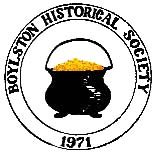Capes
Capes
By Judy Haynes
The Historical Society has several Victorian era capes in its Clothing Collection and each one is slightly different from the other, but all served a purpose in years past. Defined as a sleeveless outer garment fastened at the throat and worn over the shoulders, it was the perfect covering for bare shoulders in an age when full length skirts and ball gowns could not be worn fashionably with long, tight fitting buttoned coats. Nor would one want to squash or cover up any beautiful ballooning lower skirt. A garment known as a cape evolved and changed as needed with fashions. Different styles and lengths were given special names.
Historically speaking, a garment shaped like a cape has been around likely as long as humans needed warmth. Other names were also applied such as ‘capelet’ for a short cover. A mantelet was a small scarf-like covering, often made from taffeta or silk, and trimmed with embroidery, ruffles, fringe or lace and was worn from 1730 – 19th century. A paletot is a cloak, usually loose fitting, with one or more collars. A pelerine is a short-shaped shoulder cape, and a palatine was a silk or lacy cape to wear over a negligee. There were indoor wraps as mentioned as well as the more necessary outdoor wrap. For outside wear in cold weather, a piece of fur worked well to make a short cape or capelet and could be thrown over the shoulders, requiring merely some kind of clasp to hold it in place. Clasps and decorations on a cape could be simple or elaborate as your pocketbook would allow.
Changes in dress over the centuries often reflected social standing and an elaborate dress and cloak could easily reflect a sign of wealth, such as items made from fine furs or covered in rich beading. Capes of furs made expensive, warm wraps. Some furs like sable and mink were owned only by the very rich, while the poor could have rabbit skin, fox, etc. These wraps were also made of a variety of fabrics from fine wool, velvets, or cloths that could be decorated with fine stitching, brocade, or just kept a simple plain cloth shoulder cover. Some capes were worn as obvious symbols of rank such as a judge’s robe, which basic design is that of a cape, and cardinals would adorn with a scarlet cloak. Capes also could represent high rank in the military as part of the uniforms bedecked by officers throughout Europe in past eras.
One of the capelets in the Historical Society collection is made of ‘monkey fur. which is long glossy, smooth feeling black fur. Monkey fur capelets were made from the pelt of the Abyssinia or Colobus Monkey of Central America and were popular from the mid-nineteenth century through the mid twentieth century. Clearly, a cape can be made of furs or velvet, wool, cotton or any fabric that may be in fashion at the time. Evidence of 14th century wear indicated that a short, capelet style wrap was even made to be worn inside, a way to provide extra body warmth at a time when there was no central heating. By the 19th and 20th centuries tailors could obtain any variety of materials from foreign shores where fur, wool, fancy fabric was manufactured if not made here in the United States. Fashions from Paris were often followed and copied. If one could not afford to buy a fancy cape, McCall Bazar Patterns offered a pattern for a mere fifteen cents around 1900 and the clever seamstress or tailor could make a proper garment from any number of available materials.
Two of our prettier Victorian era capes are made of fine wool. The mid-length medium weight wool one is beige or tan in color with a rich brown ribbon as a tie and it has a dark brown exquisitely embroidered decoration on the velvet collar and along its lower edges. The other is a heavy weight full length maroon or deep red cape with elaborately designed black stitching, embroidery in artful scrolls and pleasing decoration. These cloaks were used by Nancy Falby who was born in July 1838 and her elegant cloaks were donated to the Historical Society by her grandson’s wife, Marion Newell. One can just imagine feeling fashionably dressed and rather elegant with these capes over a lovely gown.
When visiting our museum in the future you may notice the capes on exhibit, as we generally display some period clothing on mannequins. Today’s informal and casual dress dominates; thus, capes are seldom seen or worn, but you can visit the Boylston Historical Museum one day to take a step back into history to view some of our extensive clothing collection.
_____________
Acknowledgements
American Heritage College Dictionary, Houghton Mifflin, 4th ed., Boston, 2002.; American Mail Order Fashions, 1880-1900, 1989 Chandler press; Filgate, Nancy, Boylston Historical Society & Museum, Boylston, Massachusetts, editor; Martiska, Suzanne, Boylston Historical Society & Museum, Boylston, Massachusetts, photography; Nunn, Joan, Fashion in Costume 1200-1980, the Herbert Press, Great Britain, c. 1984
McCall Bazar Patterns, ca. 1900
